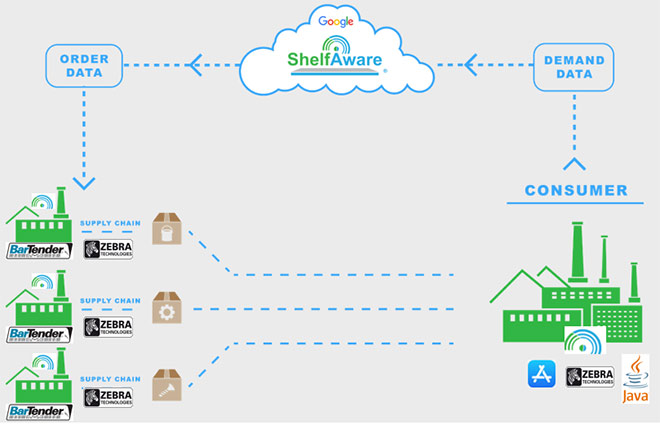Contributed by Andrew Johnson, President, ShelfAware LLC
I began my industrial career young, having been born into a family-owned O-ring distributor and grown up with the business. I have watched as the technology boom has changed the landscape of our business and those businesses around us.
 Leveraging technology to innovate your distribution business is not as complicated as it used to be. Years ago, businesses would invest hundreds of thousands of dollars, and create a huge team of people to come up with custom software and hardware solutions and a completely proprietary chain kiosk system.
Leveraging technology to innovate your distribution business is not as complicated as it used to be. Years ago, businesses would invest hundreds of thousands of dollars, and create a huge team of people to come up with custom software and hardware solutions and a completely proprietary chain kiosk system.
This is not an effective way to run a distribution business anymore, nor is it necessary. It’s time to adapt to the changes that our industry has been seeing over the last 10 to 20 years.
We’re in an era now where you have Millennials entering the workforce with decision-making power and the ability to innovate. They’re coming prepared with all these skills and this understanding of how technology works and an acceptance that all devices and software should work together.
You take this Millennial mentality and mix it with the reality offered by cloud-based services like Amazon Web Services, Google Cloud Environment, Microsoft Azure and more. These environments are all lending to the concept of what is called the Tech Stack, where you can take different pieces of off-the-shelf hardware and combine them with custom software to make very complex business-to-business systems all digital.
Adding a programmer to your team is critical, as this person can develop a mobile app for your business. Once you have that app created, you can leverage smart phones and dream big. Dream big by executing small and you can create these tech stack systems in a matter of months, and really revolutionize your business or some aspect of it, either internal or external innovations.
Starting small is crucial — I use a baseball analogy to bring this concept home. Rather than swinging for the fences, we need to focus on incremental changes, getting on base and sprinting for home. Rather than investing in massive, convoluted ERP systems, improve what you have with bolt-on software and paperless systems.

Set a BIG goal. To play the Moneyball innovation game you start by establishing your BIG business goal, something like “We want to get new customers outside of our traditional territory without opening new branch locations.” Then to achieve this BIG goal and win the game, you take an entrepreneurial approach, rounding the bases with speed through a series of small innovations. These innovations always start internally, inside your four walls, and often involve your operational excellence. These small internal innovations will breed a culture of optimization and help onboard your entire organization. They usually involve process automation from the front door to the back dock. I encourage organizations to begin this process by creating a series of automated analytical tools to assess the success or failure of these early innovation efforts.
How long will it take your organization to round the bases and head towards home plate? Not as long as you might think, with smaller organizations having the advantage here. Small organizations (less than $10 million in revenue) could see this innovation journey take less than three years. Larger organizations, depending on their starting point, could take much longer. If you successfully complete this innovation journey, putting your organization in a position to thrive, not just survive, you will of course achieve your goals of overall business performance but you will also be setup for long-term success with these key attributes of a truly digital organization.
Successful digital distributors can take the leap by having:
- A programmer on the payroll
- A handle on their data
- High levels of internal efficiencies (automation)
- Capacity and desire to optimize
Andrew Johnson is a supply chain innovator and founder and CEO of ShelfAware, shelfaware.com.
Filed Under: Fluid Power World Magazine Articles, Industry 40, IoT, News